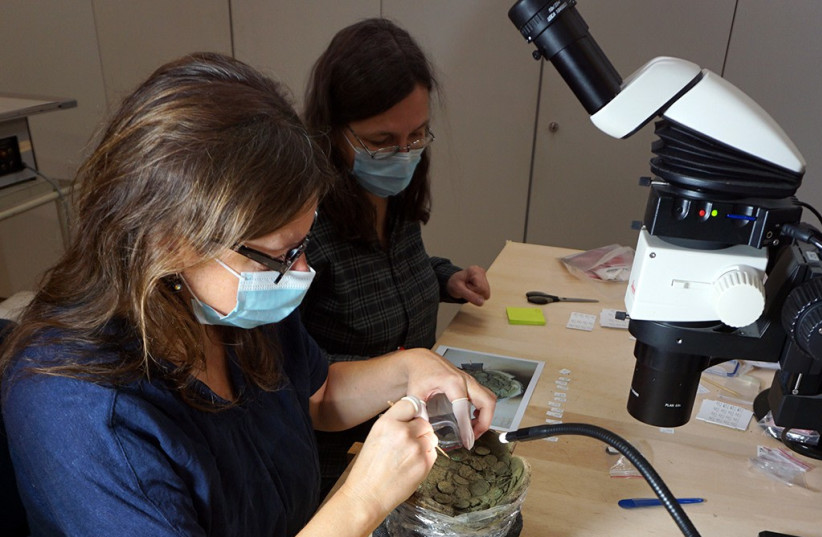Sometime in the fourth century CE, during a fairly peaceful and economically stable time during the rule of the Roman Empire in what is currently Switzerland, someone buried a clay pot filled with coins in the border area between three Roman estates near the modern city of Bubendorf.
The hoard of coins remained there undisturbed until 17 centuries later, when amateur archaeologist Daniel Lüdin discovered them while surveying a forest area with a metal detector in September.
Practicing good citizenship, Lüdin covered his find and alerted the authorities at Archäologie Baselland, who were able to excavate the pot in one complete block allowing them to document the coins and expose them under laboratory conditions.
According to a statement from Archäologie Baselland, the uncovered hoard revealed 1,290 coins made of copper alloy with a very small amount of silver. This is equivalent to what would have been about two months’ earnings for a Roman soldier at that time, they said.
Their testing revealed that all the coins were minted during the reign of Emperor Constantine the Great, who ruled from 306-337 CE. All of the coins had images of the emperor and his relatives on the front. The latest specimens date from 332-335 CE.

“It is a large amount of small change with modest purchasing power,” the archaeologists noted in the statement.
Many people during the late Roman period from the third and fourth centuries buried their valuables to protect them during times of war or for safekeeping during periods of economic crises.
But what makes this hoard unique, they said, is that it was buried precisely during a peaceful time, and few such hidden treasures from that period have been found anywhere in the territory of the ancient Roman Empire.
But the question remains as to why the coins were buried but never recovered.
While the owner’s personal motives can’t be ruled out, the archaeologists speculated that the coins may have been kept there in a kind of a border sanctuary or as an offering to the gods.
Scientists at the Swiss Federal Laboratories for Materials Testing and Research in Dübendorf used powerful computed tomography – which is similar to the CT scans used in medical procedures – to penetrate the contents of the pot in the tiniest millimeter layers. They discovered a surprising piece of cowhide separating the coins into two groups.
“One can only speculate about the sense and purpose of this subdivision,” the archaeologists said in a statement. “Were there two different owners at work here? The only thing that can currently be said with certainty is that the coins were collected in a short time and the pot was filled all at once.”
Another hoard of Roman coins was uncovered in an unusual way at the end of last year, when a badger searching for food dug up over 90 coins in the La Cuesta cave in the Asturias region of northwest Spain.
A local resident discovered the coins and called in archaeologists, who ended up finding 209 pieces from between the third and fifth centuries CE. This was the largest Roman hoard found in Spain to date, Spanish archaeologists reported in the December issue of the Spanish language Journal of Prehistory and Archaeology of the University of Madrid.
They noted that it was a period of political instability, perhaps during the time of the founding of the Kingdom of Asturias during the Late Roman period, when the barbarians who attacked the Iberian peninsula in 409 CE began arriving on the Roman Empire’s shores.
Dig director Alfonso Fanjul told CNN they believed the coins were hidden by refugees who sheltered themselves in the area.
